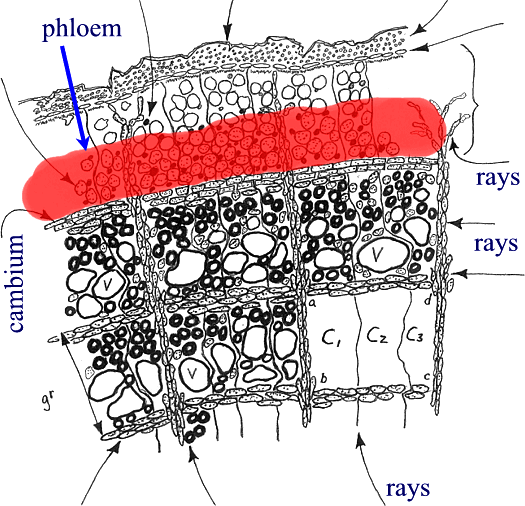Home > Tree biology > Phloem
Tree biology
Contents: - periderm - phellem - cork cambium - phelloderm - cortex - phloem- phloem rays - sieve tube element - companion cells - cambial zone (cambium) - bark - xylem - growth ring - vessels - tyloses - paranchyma - axial parenchyma - multiserrate ray paranchyma - uniserrate ray paranchyma - fibers - symplast - apoplast - growth ring/ray compartment - wounding response - decay development
Select any of the above terms to view its location in the tree cross section. Text at bottom.

Phloem
develops from the cambium. It has been referred to as the inner bark.
Sugars are translocated from leaves toward roots in the phloem sieve tube
elements. Sugars move from the phloem into the rays and into other parenchyma
cells of the symplast when the tree is healthy and growing and sugars
are abundant. Stored food (starch) can be converted back into sugars and
moved to where it is needed in the tree.

